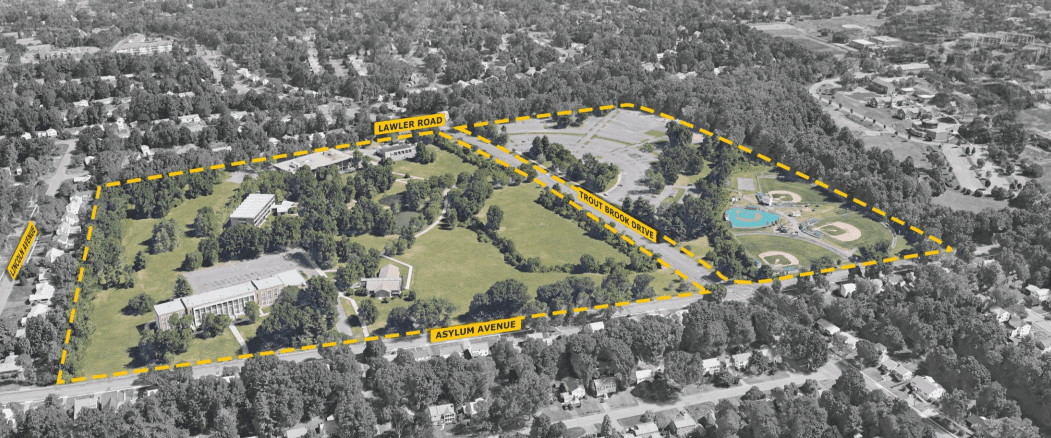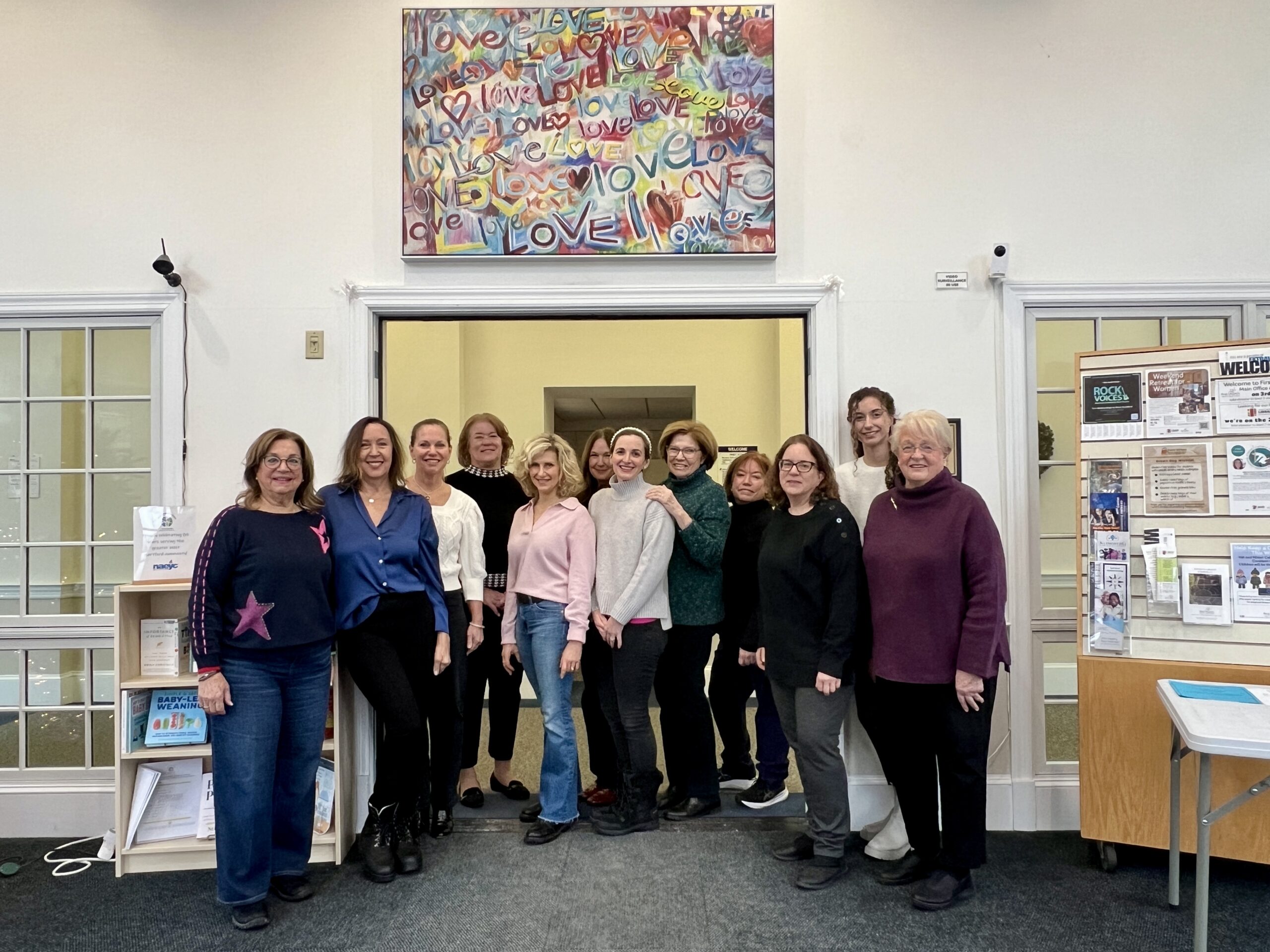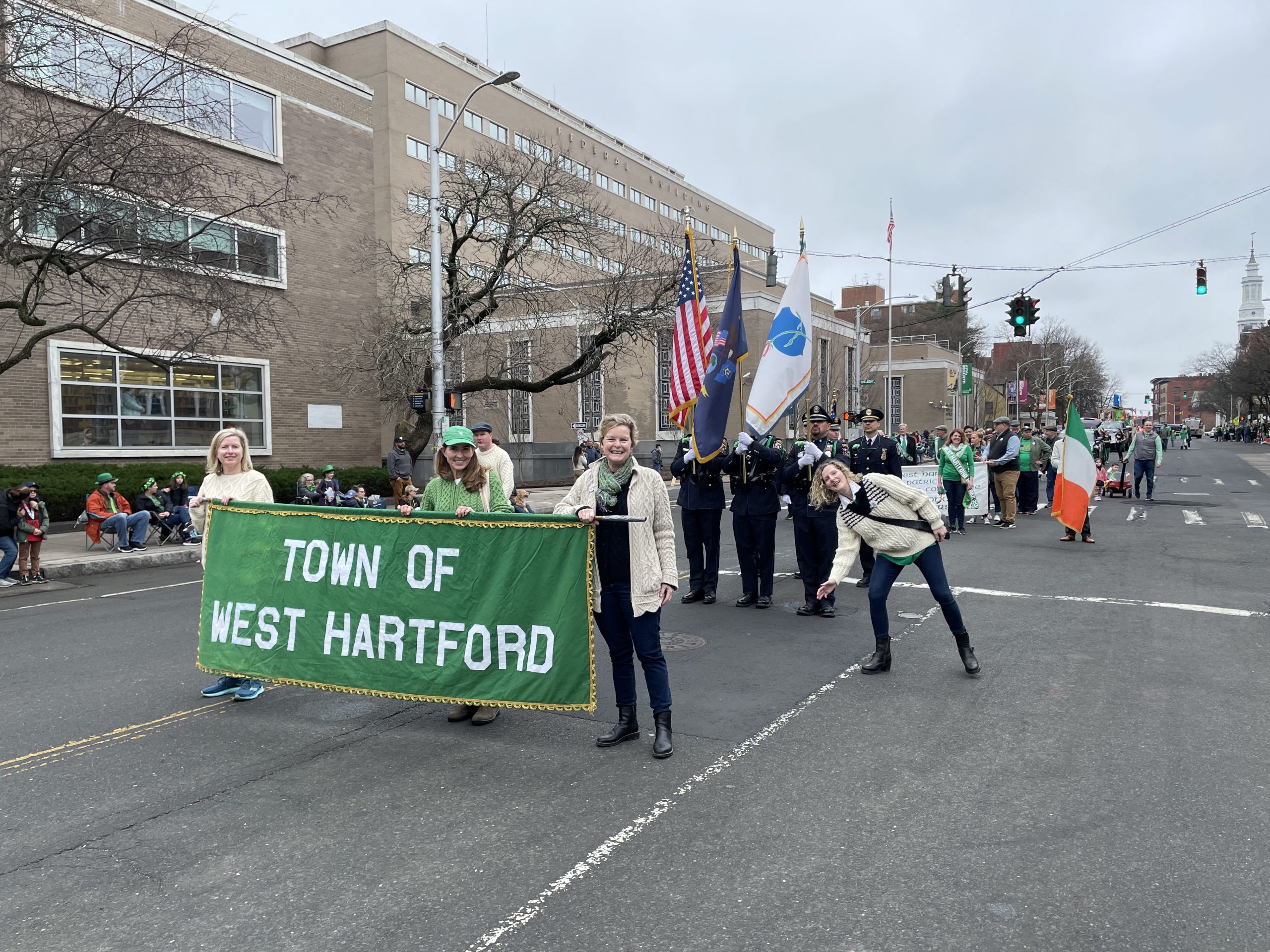UConn West Hartford Campus Vision Statement To Be Finalized

Audio By Carbonatix

UConn West Hartford campus. Screenshot from Vision Statement report
The West Hartford Town Council’s Ad Hoc Subcommittee on Economic Development received a draft Thursday of the Community Engagement Report.
By Ronni Newton
The Town of West Hartford recently conducted a community engagement process focused on the former UConn campus, and a vision statement has now been drafted for the Town Council to review at an upcoming meeting.
That draft vision statement, which is part of the Community Engagement Report prepared by the town’s Department of Community Development and consultant Milone & MacBroom, was reviewed Thursday night by the Town Council’s Ad Hoc Subcommittee on Economic Development.
The vision statement will serve as a guideline – and represents what residents believe is important in the redevelopment of the 58-acre campus – while the Town Council serves as West Hartford’s land use authority with responsibility for any zoning changes that may ultimately be required.
The town does not own the property, but the reason for development of a vision statement is to assist UConn in marketing the property to potential developers that will then have an understanding of types of projects that the town would be more likely to approve.
“We set out with a strategy and we think we executed it in accordance with the council’s wishes,” Director of Community Services Mark McGovern told the Ad Hoc Subcommittee Thursday night.
The draft of the vision statement reads: “The future development or redevelopment of the UConn West Hartford campus should strike a balance between grand list growth, the protection of natural resources, and the preservation of areas for community use. The campus should maintain its open look and feel and unique blend of green space, forested areas, wetlands, and developed areas. Future development should be high quality, attractive, and at a scale and intensity that is contextually sensitive with the surrounding neighborhood. Through creative and thoughtful site design, future development should be set back from surrounding residential areas and should preserve the open look and feel of the campus while protecting environmentally sensitive areas. The playground, athletic facilities, and supportive parking on the southeastern portion of the site are integral to the town and should be preserved for community use. Innovative ways such as the creation of public-private partnerships to maximize areas for community use on the campus, such as an extension of the Trout Brook Trail, are highly encouraged.”
In crafting the vision statement, Town Planner Todd Dumais told the Ad Hoc Subcommittee that the town and consultant were trying to capture what the community highlighted as important during the engagement process, namely “grand list growth, preservation of natural resources” and maintaining some of the property for community use. The vision statement was further drilled down, Dumais said, to note the importance of architecture appropriate for neighborhood, preserving setbacks, maintaining open space, and being sensitive to the residential neighborhood around campus.
More than 2,700 people responded to an online survey during January and February, while just over 250 attended community engagement forums. Results from the online survey and feedback during the forums were consistent.
The general consensus, Dumais said, is that the campus presents an opportunity to grown the town’s tax base. However, the most popular choices if development are “uses that don’t grow the tax base – which isn’t unusual,” Dumais said. There’s always a need to have balance, like with the town’s plan for conservation and development.
There was no clear mandate for a specific desired development on the parcel, and the vision statement was created based on a series of guiding principals that were developed as a result of the engagement process. “Clearly we did not hear a preferred use,” Dumais said Thursday.
There were some overall themes, however, and recreation, cultural, and educational institutions received the highest level of support in the online survey. Potential uses that garnered the least support were multifamily residential development and medical or other types of office use, Dumais said.
A hotel was the least favorable choice for development, and the majority of respondents indicated a preference for developing the east and west sides of the parcel separately.
Preserving the existing athletic facilities, Little League field and the Miracle League of Connecticut accessible field, was cited as something very important to a majority of those who were engaged in the process, Dumais said, and an important consideration may ultimately involve innovative ways to maximize a public private partnership for community use.
Dumais said he didn’t think there would be any surprise regarding the top concerns surrounding development – traffic, open space, and how the intensity of development would impact those who live in the area. Concern about fiscal impact was also a consideration.
The most popular write-in votes were for a dog park (185 votes) and the children’s museum (66 votes).
The guiding principals used by the Department of Community Development and Milone & MacBroom to craft the vision statement included that the campus “presents an opportunity for some grand list growth in a contextually sensitive manner”; a mixed use approach to development or redevelopment should be used to enhance the town’s fiscal well-being; intensity of development should not interfere with the existing open look and feel of the campus,and green buffers and “meaningful areas of functional open space” for the public should be maintained; uses strongly supported by the community – cultural, educational, and recreational – should be embraced as opportunities; environmentally sensitive areas should be protected; and “robust community engagement should continue” as land use decisions are considered.
Town Manager Matt Hart said that UConn has the property on the market and could sell it at any time. The vision statement, however, will “inform any prospective buyer of the community’s interest” and “will serve as a resource to the Town Council when and if you are considering future land use.”
UConn is in talks with two or three interested parties, Hart said. While there is no executed purchase and sale agreement for the property as of now, he said it’s possible that terms between UConn and a buyer will be agreed upon in April.
If UConn does not find a buyer, the vision statement and guiding principles could also be used to craft the town’s request to seek a partner to perhaps form a public-private partnership to develop the property.
More than 90 percent of the people involved in the engagement process were West Hartford residents, and a majority have lived in town for more than 10 years. About two-thirds were between the ages of 35 and 65, which is a good representation of the town’s population, Dumais said. Nearly half live within a mile of the UConn campus.
The appendices to the community engagement report and draft vision statement are attached below in PDF form. The report itself is still being finalized and will be posted on the project page of the town’s website on Monday. Still to be added are documents including a petition from the Children’s Museum with more than 600 signatures in favor of moving the facility to the UConn parcel, and a summation of community comments.
Ad Hoc Subcommittee Chair Dallas Dodge asked McGovern what he thinks West Hartford is missing, and McGovern replied that what the town really needs is commercial office space, which residents did not consider a favorable use of the property. Small retail business is also something the town could use, McGovern said, as are larger condominium complexes which can be difficult to finance.
“What we don’t have are a lot of are cultural amenities or venues,” said Dumais. However, Hartford does. West Hartford needs a dog park, Dumais said, “but really we have a lot of everything.”
Subcommittee member Ben Wenograd noted that the athletic community is pushing for an indoor sports facility, like a “bubble.” McGovern said that a developer would need to consider how it could be profitable.
“I don’t think a prospective buyer needs to feel locked into one of the uses that scored most highly,” Hart said. What’s most important is adhering to the guiding principles.
“This is a suggestion, really,” Minority Leader Chris Barnes said. He expressed concern that it would be used to push back a potential buyer, but McGovern said it’s intended to be more of a proactive tool to manage expectations, along with existing zoning codes and wetlands restrictions.
Barnes also asked if there is a danger of the contaminants on the site spreading if the property remains undeveloped for a long time. McGovern said his understanding is that any problems won’t spread, but that it’s important to keep people away from the site.
The vision statement is a “pretty strong and current snapshot of what the community thinks is important,” Dumais said, and because that the economics don’t work for single family residential development, for which the property is zoned, the Council will likely need to approve a special development district for the parcel once a developer is found.
The Town Council will review the vision statement at an upcoming meeting, Dodge said.
Like what you see here? Click here to subscribe to We-Ha’s newsletter so you’ll always be in the know about what’s happening in West Hartford!
 Loading...
Loading...
 Loading...
Loading...
 Loading...
Loading...
 Loading...
Loading...




When Blue Back Square was under consideration there were similar community engagement efforts. In my opinion, the town lost all credibility when input was ignored and the developer was given a pass on financing of the garages, open space where Delamar stands, library parking is now horrendous to name a few broken promises.
There were strong suggestions of that development easing the tax burden of citizens but the result was millions in losses at the garages and BBS properties getting preferential revaluation treatment as residences surrounding the center having substantial tax increases.
The prevailing opinion is that the town has to fund itself through growth but each new development if followed by a tax increase that exceeds inflation. The excuses may vary but the results are always the same. The costs of these developments exceed their benefits and the evidence is in each year’s budget.